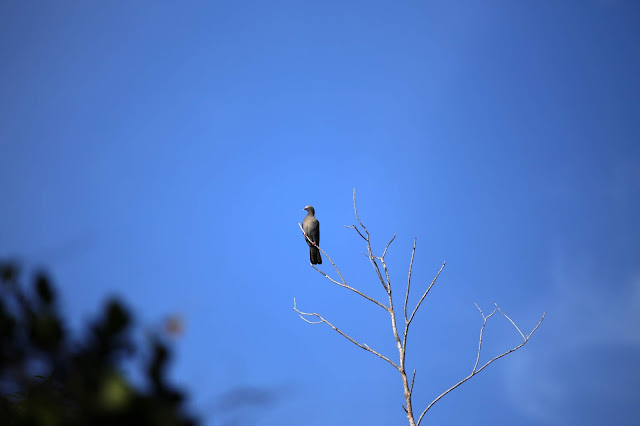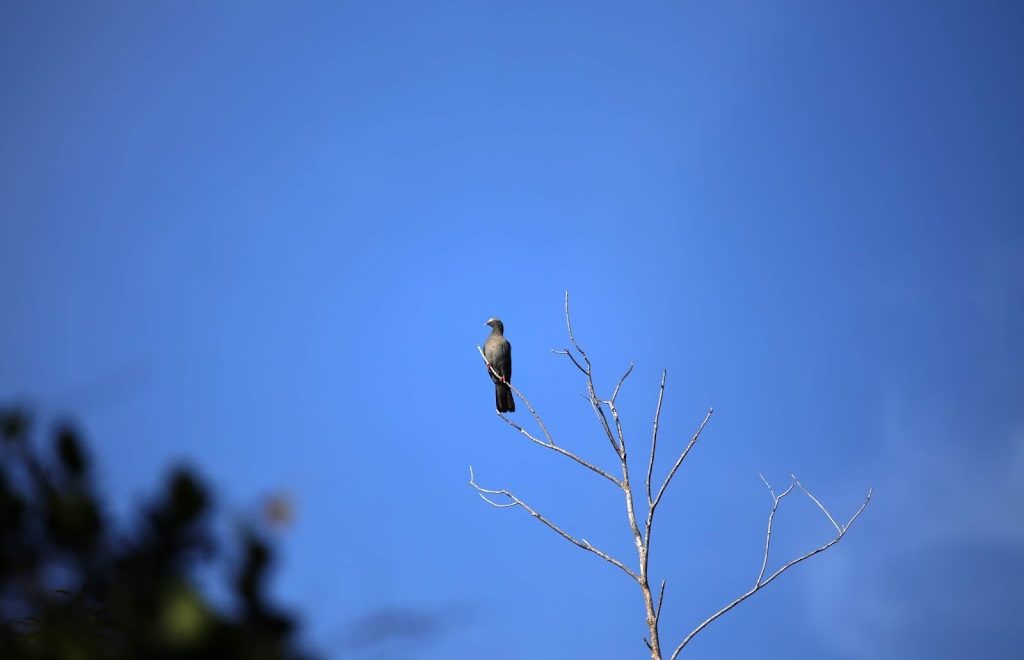 |
| An adult White-crowned Pigeon sits atop a bare tree. Copyright 2018 Flickr user cuatrok77. |
Life as a White-crowned Pigeon is full of challenges. Migrating, parenting, surviving hunting season, and finding consistent food are all on a pigeon’s yearly to-do list. Trelawny, a female tagged in Jamaica over 4.5 years ago, and South Glades, a male tagged in Florida in 2015, are two White-crowned Pigeons who are persisting despite these obstacles. In fact, these two birds are the longest-tracked White-crowned Pigeons to date!
Trelawny and South Glades are being tracked with lightweight, solar-powered satellite transmitters weighing 5 grams.
White-crowned Pigeons can only be found throughout the Caribbean, in southernmost Florida, and in parts of coastal Central America. Most of the population is migratory; some pigeons travel between countries while others move to different habitats within the same island. Trelawny, an example of the latter, spends her whole year in Jamaica and moves 7-14 miles between the coast in the non-nesting season and the mountains in the nesting season. South Glades, in contrast, nests in south Florida and migrates to Cuba in the winter.
 |
| A White-crowned Pigeon amidst ripe Poisonwood fruits. Copyright Florida Fish and Wildlife. |
The timing of these migratory movements coincides with the ripening of fruit-bearing trees like Poisonwood (Metopium toxiferum), Fig (Ficus sp.), and Blolly (Guapira sp.). In Florida, Poisonwood is the most important food for nesting White-crowned Pigeons. The nutrient-rich fruits are easily digestible and give pigeons like South Glades enough energy to make daily, repeated trips between inland foraging spots and the predator-free, offshore mangrove island where he raises his young. And where the pigeons defecate, new fruit-bearing trees sprout and create more habitat for the birds.
When the flush of ripe Poisonwood fruits ceases, South Glades departs to Cuba. Every trip over water – with no place to rest – puts a bird in danger. Last month, on 1 September, he completed his fourth migration to Matanzas, Cuba. He left just before the skies filled with hungry hawks and falcons as they too made their winter migrations. This was at least his seventh trip across the Straits of Florida!
Migrating long distances over water is risky, but staying on one island has its own threats. White-crowned Pigeons are not hunted in Florida, but they are in Jamaica and many other parts of the Caribbean. Jamaica’s dove hunting season lasts about a month from August to September. There is a bag limit of 15 White-crowned Pigeons per season, but illegal take is common and hard to regulate. Thankfully, Trelawny appears to have figured out how to evade the hunters. We are excited to see how long we can track her movements in Jamaica.
ARCI has been tracking the movements of White-crowned Pigeon since 2002. We have learned a great deal about the range-wide movements the birds make between The Bahamas, Cayman Islands, Jamaica, Cuba, and south Florida. The more pigeons we track, the more we will continue to learn about range-wide breeding, foraging, and wintering locations; migration timing; and longevity and survival.
Click here to support Trelawny and South Glades. Your generous donation keeps the stream of data flowing from their transmitters to all of us.


Leave a Reply